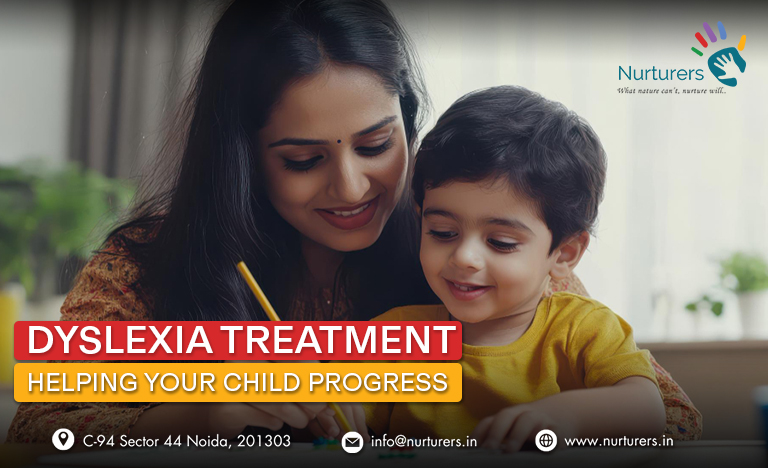
What is Dyslexia?
Dyslexia is a common learning difficulty that affects a person’s ability to read, write, and spell. It doesn’t reflect intelligence but impacts how the brain processes language, making tasks like reading and decoding words more challenging. While it can be frustrating, with the right support and teaching methods, people with dyslexia can thrive academically and in life. Early diagnosis and intervention are key to helping individuals succeed.
Dyslexia Signs by Age Group

Dyslexia shows up differently in people depending on their age. Spotting the signs early can really help in giving the right kind of support. Here’s how dyslexia presents itself in different stages of life:
Preschool Age
In very young kids, the signs of dyslexia might not be easy to spot, but there are some early clues:
- Speech development might be slower than usual.
- They may struggle with learning new words.
- Nursery rhymes can be hard for them to remember or repeat.
- Recognizing letters or learning the alphabet can be challenging.
Elementary School Age
Once children start school, the signs of dyslexia become clearer, especially when it comes to reading and writing:
- They may read below the level expected for their age.
- Letters like “b” and “d” can get mixed up.
- Completing reading or writing tasks may take longer than their classmates.
- Reading can be frustrating, and they may try to avoid it.
Teens
For teenagers, dyslexia might still be affecting their academic life, but the signs may be less obvious:
- They might read slower than others or avoid reading aloud.
- Summarizing what they’ve read or remembering details can be difficult.
- Spelling problems might continue, even with familiar words.
- Learning new languages can be extra challenging.
Adults
In adults, dyslexia can affect both work and everyday tasks, but it may not be as noticeable:
- Reading longer or complex material can be tough to understand.
- Spelling mistakes may happen, even with common words.
- They might avoid tasks that require a lot of reading or writing.
- Writing down thoughts or organizing written ideas can feel difficult.
By recognizing these signs at different ages, individuals can get the help they need, whether in school, at work, or in daily life, to better manage their dyslexia and reach their potential.
Key to Support Dyslexia:
Personalized Teaching: Programs like Orton-Gillingham break reading into small steps, allowing kids to learn at their own pace. Watching your child succeed as they gain new skills is truly rewarding.
Using Technology: Tools like audiobooks and speech-to-text software can make learning more accessible. These resources help your child enjoy stories and write with ease, without the pressure of reading every word.
Multisensory Learning: Engaging senses like touch and sight can make learning fun. Activities like tracing letters in sand or using colorful letter tiles make reading more interactive and exciting.
Getting Professional Help: Reading specialists and speech therapists can provide personalized strategies for your child’s needs. Their guidance can make a big difference in your child’s progress.
With patience, love, and the right tools, you can help your child build confidence and enjoy learning. Celebrate every success, no matter how small, and remind them that they are capable of great things. Together, you can overcome dyslexia’s challenges and let your child shine!
Dyslexia Treatment
Learning that your child has dyslexia can feel overwhelming, but with the right support and dyslexia treatment, they can thrive. Here’s how you can help:
Tips for Parents to Support Their Children
- Establish a Daily Routine: Setting a consistent routine for schoolwork, reading, and play helps your child feel more organized and know what to expect each day.
- Make Reading Enjoyable: Pick books that match your child’s interests and make reading a fun, shared activity. Even 10-15 minutes of reading together can make a big difference.
- Use Hands-On Learning: Engage your child with activities that use sight, sound, and touch, like letter games or educational apps. These can help them understand new concepts in a more interactive way.
- Be Patient and Encouraging: Celebrate every small step forward, especially when your child is having a tough time. Your encouragement can boost their confidence and motivate them to keep trying.
- Create a Quiet Study Space: Find a space in your home where your child can focus on their work without distractions. A calm environment helps them concentrate better.
- Communicate with Teachers: Stay connected with your child’s teachers to stay informed about their progress and get ideas on how to reinforce learning at home.
- Take Breaks: Allow your child to take short breaks during study sessions. It helps them recharge and return to their work with better focus.
- Recognize Effort, Not Just Results: Focus on praising the effort your child is putting in, not just the outcome. This helps them stay motivated and feel proud of their hard work.
- Encourage Their Hobbies: Support your child in finding hobbies or activities they enjoy. This gives them a sense of accomplishment and helps them build confidence.
- Stay Positive: Keep a positive attitude, and remind your child that it’s okay to struggle sometimes. What matters is that they keep going and know you’re there to support them.

Hi! I am Swati Suri, a Special Educator with 9+ years of experience and the founder of Nurturers. I am passionate about helping children with special needs and supporting their families every step of the way.


